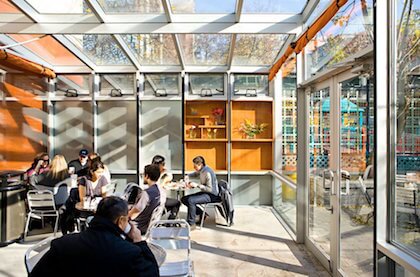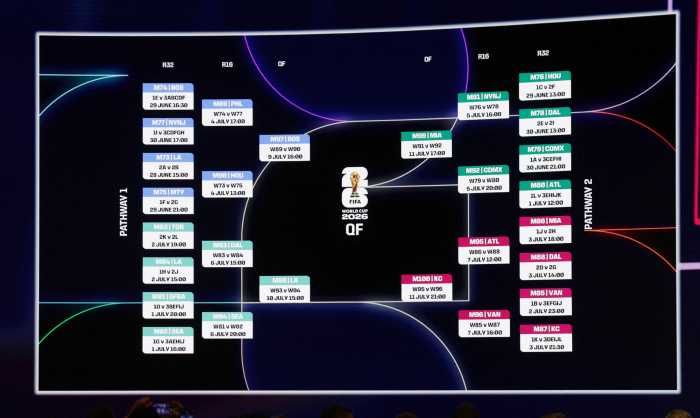Fantasy plays an enormous role in eating. But in the realm of pastry it is off the charts. At Cronut creator Dominique Ansel’s two bakeries in Manhattan, I saw a pastry made of sesame and cherry imitating a Japanese paper crane. I saw another confection made to look and taste like a giant blackberry. I saw orange-pink grapefruit arranged to appear (it was clear to me, at least) as an excited vulva, spreading itself atop a lemon-thyme tart.
And all of this effort went toward more that mere looks, for the taste and textures of each of Ansel’s extravagant, superb objects was as rich and complex as a novel.
Let me get one thing out of the way — this is not going to be a review of the Cronut. In a way, I wish it were, for the croissant-doughnut with fillings like blueberry lemon verbena and gianduja blood orange looks divine on Instagram, but I do not get up at six in the morning to purchase anything. Still, in an oblique way you could say this is a review of the Cronut, for the legend of the Cronut utterly shapes the experience of dining at its producer’s bakeries, even at the West Village location that has never sold them.
Putting Dominique Ansel’s fare beyond the Cronut to the test
My best time at Dominique Ansel (in either location) was my first visit, to the Soho store on Spring Street. There were two traveling-model types cutesily taking pictures of each other next to famous chocolate desserts, but there were only two of them, and the shop is large once you get past the narrowish front. In the back there is a large, lovely seating area whose ceiling is one vast skylight, so the room is filled with sun. There is lemon water available for guests, and the space looks out onto an outdoor garden that also has abundant tables and chairs.
Sitting in the sunny back room, I ate the giant blackberry. It turned out to be a dark purple globe of blackberry geleé encircling a mousse made of milk chocolate and rosemary. The mousse in turn enclosed a core of housemade blackberry jam, and mousse and jam stood together atop a little chocolate dacquoise cake. The milk chocolate, the rosemary, and various blackberry formations startlingly combined to taste like blackberry in the mouth. Or, I should say, to taste more like blackberry than an actual blackberry would. The globe tasted like what Wallace Stevens might have called The Blackberry at the End of the Mind, with the heft and darkness (here from chocolate) that you always find yourself wanting in blackberry to complement and reconcile its high, acid notes.
Eating it, as I drank down good strong coffee and sat in the warm sunlight, going back for more and more lemon water, I thought, “This would be a great place for a date!” People could eat luscious pastries together and relax in the sun. And it would all be affordable, as dates go. Even at $6.50 a pop for most desserts and $3.50 for a large coffee, it would still be cheaper than going out to dinner.
My fantasy came crashing down on my next visit to Spring Street. At least 20 people in identical yellow T-shirts milled around in the narrowest part of the store, in front of the counters — American tourists in two different large groups, led by leaders with whistles and clipboards. I am overwhelmed in a sea of butter-yellow people who don’t know where to stand. I am trying to figure out how to place my order, but it’s confusing. Finally a counterperson summons me for my turn, frowning: “Oh, you’re not with the group.” “No.” “I thought you were. You could have ordered much sooner if I’d known.” Not even taking the time to be embarrassed, I order a grapefruit thyme panna cotta (not the vulva tart, a different dessert made with grapefruit and thyme).
I settle down with it at one of the nice tables in the front. (The tourists have overrun the back, but the front of the bakery is relatively wide, with two comfortable tables by a window, before it constricts to the tiny floor-through area with counters.) I will pretend I’m on a date — all I have to do is imagine that someone is with me and the swarming tourists are gone.
I ordered the grapefruit panna cotta because it’s the most voluptuous thing in the display case — different shades of red, pink, and golden grapefruit segments curling merrily on top of a dish of white creamy stuff. They are poached in honey and colored like jewels, their red juice exploding in my mouth as it hits the panna cotta, cream cooked with gelatin and sugar. The panna cotta tastes preternaturally fresh, rich and sweet and airy, even floaty. The fruit is so vivid and bright that the dish tastes light despite the richness of the cream.
I want my wedding cake to taste like this. All I can think of is sex, eating it. The red fruit is curled like shrimp. It sticks in and out of its custard. Also, I think of religious ecstasy. “The land of milk and honey” was my favorite Bible line in yeshiva. But as I got older, I loved, “May I find your breasts like clusters of grapes on the vine. Syrup and milk are under your tongue.” Inside the panna cotta are tiny bits of excellent candied fruit. And in the center of the bowl is what looks like a gleaming golden gumdrop, which turns out to be “local bamboo honey geleé.” This gumdrop functions as the big, yankable clitoris of this dessert, or, you could say, the cherry on top.
Grounding the dish is a tiny olive oil cake, which provides a nice bass note.
My religious experience with the red fruits and their cream was quite real, but now I’m noticing that my normally cast-iron stomach is starting to hurt from how rich the thing was. “Food!” I think. “I’ll put real food in there to settle me down.” I order a “roasted pork club” — Dominique Ansel Bakery and Dominique Ansel Kitchen both have extensive food selections — but the sandwich ($12) is too dry despite some nice pieces of pork, and counter staff do not alert me that the sandwich will take 30 minutes because they are waiting on a huge order from a group of 20 tourists.
I decide that Dominique Ansel Kitchen, the chef’s outpost on Seventh Avenue and Charles Street, must have been invented so that New Yorkers could enjoy the paradise of his pastries without tourist intervention. (Sincere disclaimer: I have nothing against tourists. I don’t think they’re unfashionable or uncool or ugly. I just wish they would all spread out and go to different places, not converge on the same ones.) The West Village shop is a little prettier, with dark woods on the inside and lovely lavender and white picnic tables in an outdoor seating area in front, with extraordinary (and copious) lavender and white flowers in urns. More importantly, they do not sell the Cronut! I’m excited. The savory food items on the menu sound so good that I’m determined to try one despite my experience with the overly bread-laden and tough-pigskin-infested pork club.
There’s a dish called the Egg-clipse, which consists of “squid ink brioche, mashed potatoes, mushroom béchamel, and two confit egg yolks” ($8.25). I have to have it. According to its website, the Kitchen’s focus is pastries and food cooked “à la minute,” which means right then at the very moment that you order it. “For Chef Dominique and our team, eating things at the wrong moment is just as bad as over- or under-salting your food.” I sit at one of the beautiful white-and-lavender tables in front, although to do so I must squeeze awkwardly past some young women at the next picnic table, because one table has been slapped down right behind the other, with no room to move between them. The young ladies are extremely annoyed when I apologetically go behind their bench.
Tourists? I don’t think so; instead, they seem to be wealthy but insecure newcomers, boasting about which famous restaurants they’re going to go to and where their “fiancés” are taking them for the weekend.
Finally the Egg-clipse comes. My server’s at a loss for how to get the dish to me, pausing for a minute, paralyzed by the restaurant’s configuration. Finally, shrugging, he heroically squeezes his narrow butt past a flower urn, breaking one of my egg yolks in the process. Digging in, I find the eggs are also cold. Has the dish really been cooked à la minute? The squid ink brioche, presenting as a very black, very thick slice of bread, surprises by being the best part. Note to Chef Dominique: please remove all but a little of the weird mountain of mashed potatoes on the open-faced sandwich, add more cheese, and serve the eggs hot.
I was going to say this experience taught me that one shouldn’t order the real food in bakeries, but then I remembered the delicious ham, goat, and chicken tortas at the Don Paco Lopez Panaderia in Sunset Park, recently profiled in the Times, and the nice sandwiches at Colson Patisserie in Park Slope, conveniently across from the Ninth Street YMCA.
I grab two chocolate chunk cookies to go (Karen’s favorite, $3.50 each). The cookie is buttery and yielding and complex, but the chocolate is not nearly chocolatey or intense enough.
Final visit: I return to Spring Street to bring two pastries home. Grumpy staff try to force me to take a pavlova with whitish, unripe-looking blackberries and a pastry bird missing its head. “You’re not allowed to pick the one you want.”
I rebel, bringing home a salted caramel eclair for Karen, delightfully 8 1/2 inches long and melty and exquisite ($6). Bliss. Bliss. Bliss. How can I describe the taste? Perhaps it is like the nipples of your very favorite person.
For me, I get the “Sesame Cherry Origami ‘Crane,’” the very thing that first grabbed my attention in Dominique Ansel’s display case. “Toasted white sesame mousse, black sesame dacquoise with a cherry sake geleé center,” the menu says of it ($6.50). With tiny white chocolate “wings,” it really does look like a paper crane. But it tastes… not great. The black cherry center is okay. The white sesame mousse is a little too creamy, and okay. Can’t find the black sesame dacquoise, it must be a small part of this. The different textures and tastes don’t hold together, and I can’t make sense of them as a cohesive dish. Then my stomach starts to hurt.
Dominique Ansel Bakery, 189 Spring St., btwn. Thompson & Sullivan Sts., 212-219-2773, dominiqueansel.com. Mon. to Sat., 8 a.m.-7 p.m.; Sun., 9 a.m.-7 p.m. A wheelchair may be able to get in the door, but good luck getting to the ordering counter or finding space to station it inside. The restroom is narrow. Dominique Ansel Kitchen, 137 Seventh Ave. S., btwn. Charles & W. 10th Sts. (not far from the LGBT Community Center), 212-242-5111, dominiqueansel.com. Mon-Sun., 9 a.m.-9 p.m. The restaurant is wheelchair accessible and the restroom can fit a wheelchair, but there are no handrails.















